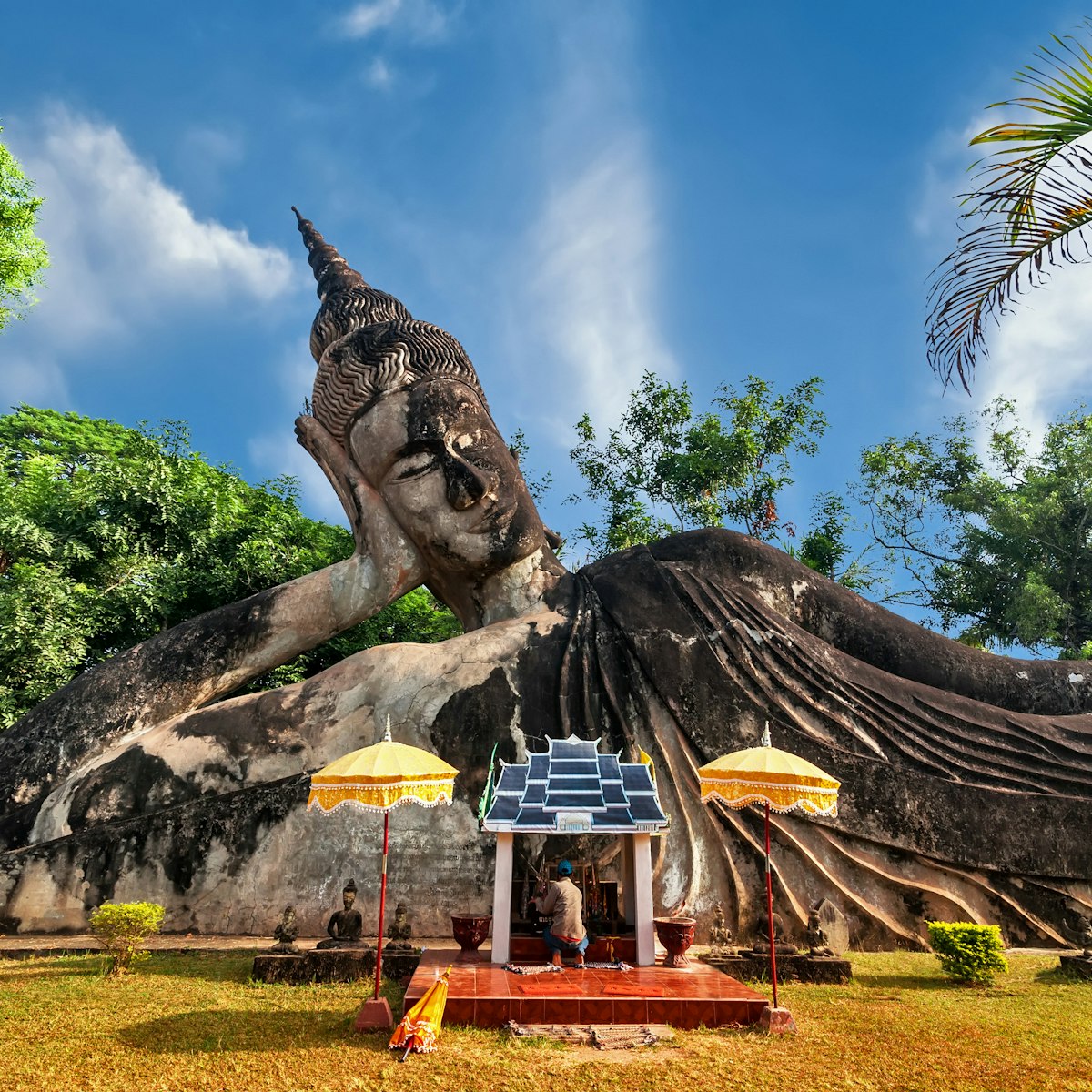One of Thailand’s most enigmatic attractions, Sala Kaew Ku can't fail to impress. Built over 20 years by Luang Pu Boun Leua Sourirat, a mystic who died in 1996, the park features a wonderful smorgasbord of bizarre cement statues of Buddha, Shiva, Vishnu and other deities. The main shrine building is packed with hundreds of smaller sculptures of various description and provenance, photos of Luang Pu at various stages throughout his life, and his corpse under a glass dome ringed by flashing lights.
As he told his own story, Luang Pu tumbled into a hole as a child and met an ascetic named Kaewkoo who introduced him to the manifold mysteries of the underworld and set him on course to become a Brahmanic-yogi-priest-shaman. Shaking up his own unique blend of Hindu and Buddhist philosophy, Luang Pu developed a large following on both sides of the Mekong in this region. In fact, his original project was on the Lao side of the river, where he had been living until the 1975 communist takeover in Laos.
Some of the sculptures are quite amusing. If you’re travelling with kids, they’ll enjoy the serene elephant wading through a pack of anthropomorphic dogs (which teaches people to not be bothered by gossip). The tallest sculpture, a Buddha seated on a coiled naga (serpent deity) with a spectacular seven-headed hood, is 25m high. Also not to be missed is the Wheel of Life, which you enter through a giant 'mouth'. An explanation is available on the back side of the handy map of the sculpture park provided by Mut Mee Garden Guesthouse.
All buses headed east of Nong Khai pass the road leading to Sala Kaew Ku (10B). It's about a five-minute walk from the highway. Chartered túk-túk will probably cost 250B return with a one-hour wait. You can reach it by bike in about 30 minutes; the Mut Mee map shows the scenic route.




